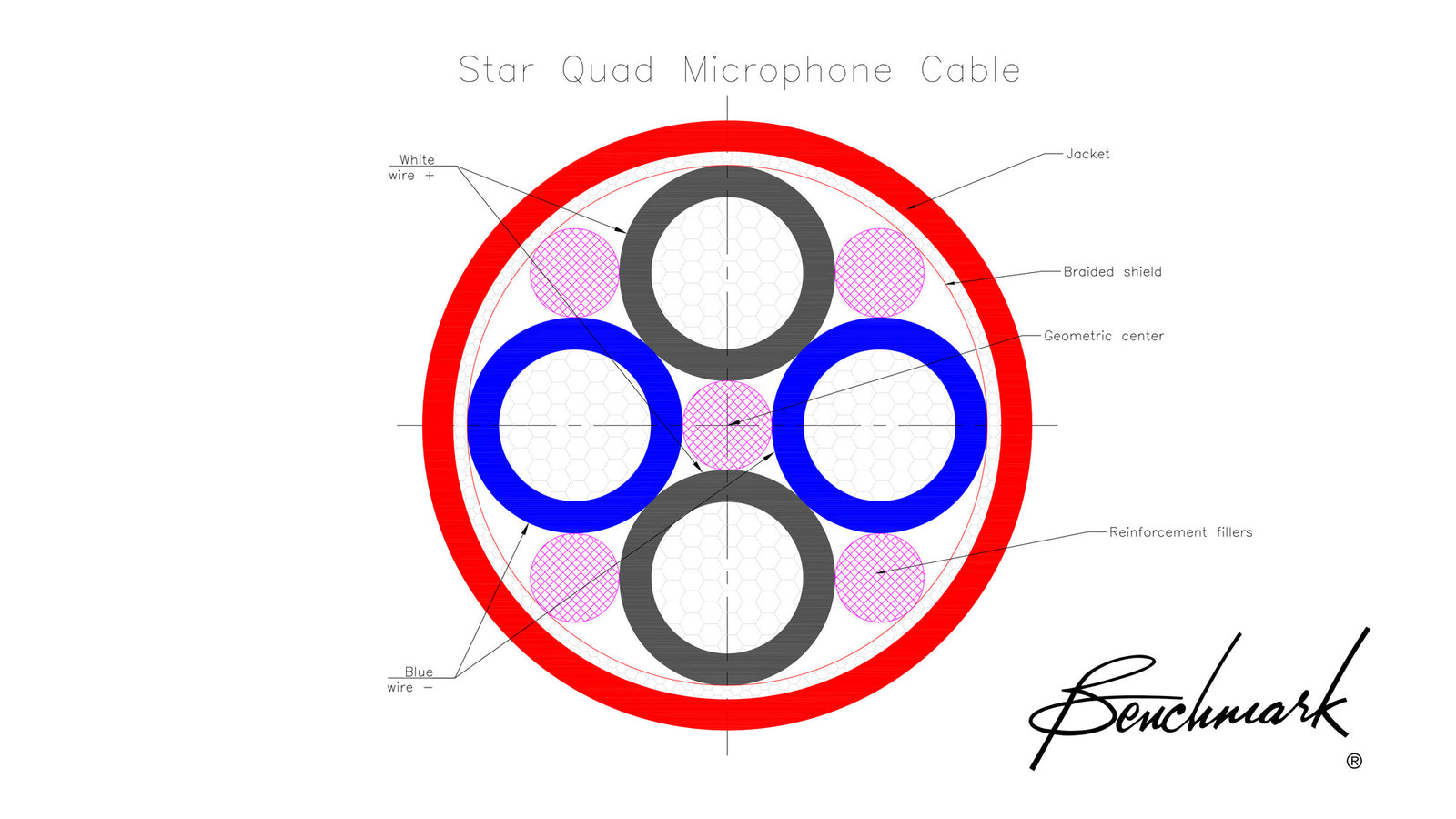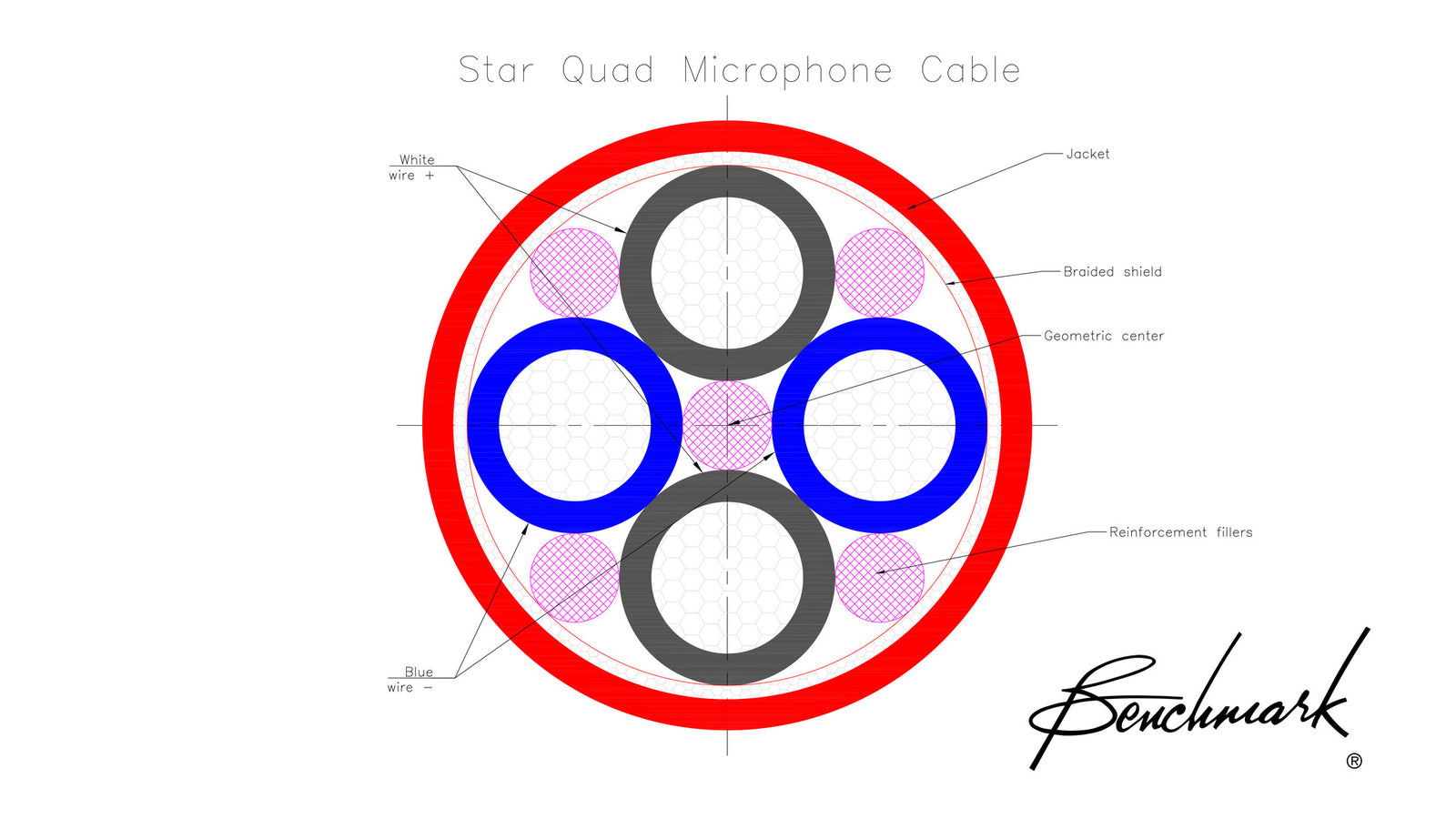Buy one component and save 10% on up to 2 cables. Buy 2 components and get 4 free cables. Free shipping on USA orders over $700. We are closed 12/25 and 12/26.
Buy one component and save 10% on up to 2 cables. Buy 2 components and get 4 free cables. Free shipping on USA orders over $700. We are closed 12/25 and 12/26.
Audio Application Notes
Star Quad Cable Demonstration - Video
by John Siau February 12, 2016
Benchmark has recorded a lab demonstration that shows what happens when a standard two-wire cable is exposed to common sources of magnetic interference.
You will be able to hear the interference, see it on an oscilloscope, and view its spectrum on an FFT. A star-quad cable is exposed to the same sources of magnetic interference and the results are compared. This demonstration shows the dramatic difference between the two cables. The star-quad cable provided a 20 to 50 dB reduction in magnetic interference, keeping the interference below audible levels.
- John Siau
The Importance of Star-Quad Microphone Cable
by John Siau February 12, 2016
Eliminate Magnetic Interference with Star-Quad Cable

Studios, live sound venues and homes all have magnetic fields that can cause interference. Magnetic fields are produced whenever current flows through a wire. AC power cables, transformers, power supplies, computers, portable chargers, motors and light dimmers are among the devices that can emit strong magnetic fields. A microphone cable can pick up magnetic interference if it happens to pass near one of these devices. Cables can also pick up magnetic fields when they run adjacent to AC power. Star-quad cables typically reduce this magnetic interference by at least 20 to 30 dB. This is almost always enough to reduce the interference to inaudible levels.
- John Siau
Using the MPS-420 - One Engineer's Experience
by Benchmark Media Systems January 01, 2000
By Alan Silver President, Connoisseur Society, Inc. New York, NY
In 1984 I was offered the opportunity to record the legendary jazz pianist, John Lewis, in the 24 Preludes and Fugues from J.S. Bach's Well Tempered Clavier, Book One. It was a large assignment intended to take five years with completion scheduled for 1989. Each prelude was to be recorded exactly as written on solo piano and each fugue was arranged by John Lewis for piano, bass, guitar and varied combinations of strings. In addition, an interlude of jazz improvisation, played by Lewis, was to be integrated seamlessly into each prelude and fugue.
The record company was Philips of Japan, and they wanted me to match the solo piano sound...
Measuring Mic-Preamp Noise
by Benchmark Media Systems January 01, 2000
By Allen H. Burdick
To perform valid noise level measurements, two specific conditions must be established:
- A 150 Ohm source impedance
- A 20 kHz measurement bandwidth
The microphone preamplifier must have the proper source impedance at its input. If it does not, the preamp will amplify the noise of its internal bias resistors, resulting in much higher noise voltage. Typically, the easiest way...
Is Your Mic-Pre Clean Past 30 kHz?
by Benchmark Media Systems January 01, 2000
By Allen H. Burdick
Who Should Care?
You Should Care!
High-Frequency Intermodulation Distortion is a Critical Mic-Pre Parameter!
The mic-pre function is one of the most difficult challenges facing the audio engineer. A mic-pre is often the limiting factor in the audio chain. When selecting a mic-pre, everyone looks for...






